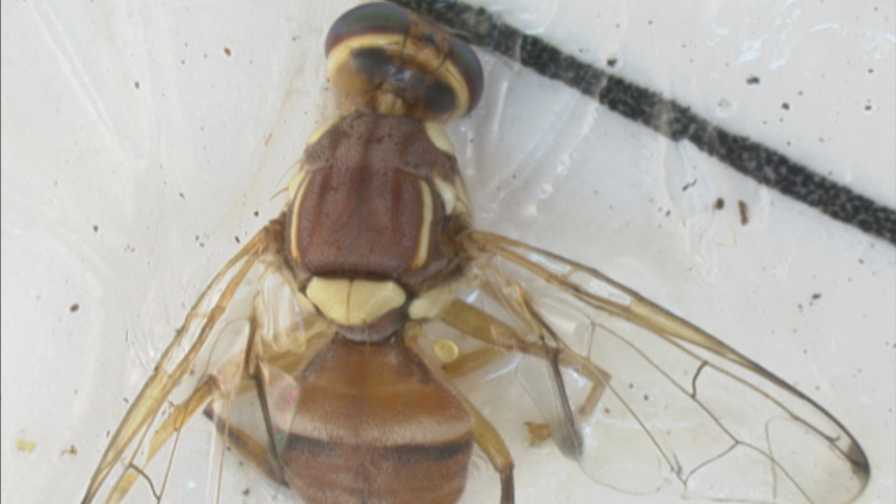Pest Alert Triggered in Florida After Rare Fruit Fly Find

This peach fruit fly was captured in a detection trap in Lake Worth, FL, on May 9. A second was trapped less than two miles away just one day later, setting off a pest alert for local growers.
Photo by Gary Steck, FDACS
The Florida Department of Agriculture and Consumer Services’ Division of Plant Industry (FDACS-DPI) has issued a pest alert, indicating a male peach fruit fly — Bactrocera zonata (Saunders) (Tephritidae) — was captured in a detection trap last week in Lake Worth (Palm Beach County). A second male was then captured less than two miles away one day later, also in Lake Worth. According to FDACS-DPI, this is only the second time this pest species has been found in Florida. A previous detection was made in November 2010 in Miami-Dade County.
Per the pest alert, Gary Steck, FDACS Bureau of Entomology, Nematology, and Plant Pathology, provided the following key specs on the peach fruit fly.
Identification
The wing color pattern of the peach fruit fly comprises only a small dark spot near the wing tip that is reduced from the pattern seen in the otherwise similar Oriental fruit fly (B. dorsalis), which has a complete costal band and anal streak that overlays the basal cubital wing cell. The Asian guava fruit fly, B. correcta, has a nearly identical wing pattern, but the colors of the thorax are notably darker, not the red-brown seen in B. zonata.

Here is a closeup of a peach fruit fly trapped in Miami-Dade County in November 2010, the only other time the pest has been detected in Florida.
Photo by Gary Steck, FDACS
Host Plants
There are records of natural field infestation of at least 54 different host plants. These hosts include: common guava, avocado, mango, peach, sugar apple, apple (Malus domestica), bitter gourd, date palm, okra, papaya, apple (Malus pumila), pomegranate, quince, sweet orange (Citrus sinensis), and tropical almond (Terminalia cattapa).
Spread
The peach fruit fly is widespread in south Asia from Pakistan, India, and Sri Lanka to southeast Asian countries such as Thailand, Laos, Vietnam, and Indonesia. It was introduced and established in the Arabian peninsula since at least 1982, well-established in Egypt since the late 1990s, and also present on the Indian Ocean island of Mauritius. Outbreaks were reported in Israel in 2014 and Iraq in 2016. It has been detected numerous times in California since 1984 where an eradication program was conducted in 2013. It is not established there.
Economic Impact
In India, the pest status of peach fruit fly is considered equal to or greater than that of the Oriental fruit fly and the melon fly (B. cucurbitae), and they may overlap in the same crop. This pest is active throughout much of the year.
Biology and Trapping
Males are attracted to methyl eugenol. Detection of this and many other fruit flies depends on a widespread grid of baited traps in areas where introductions are likely to occur. Once a fly is detected, the trapping density is greatly increased for several square miles around the detection point. If further flies are detected, an eradication program may be implemented. As methyl eugenol is such a powerful attractant, an insecticide is added to the bait and flies are quickly annihilated.









